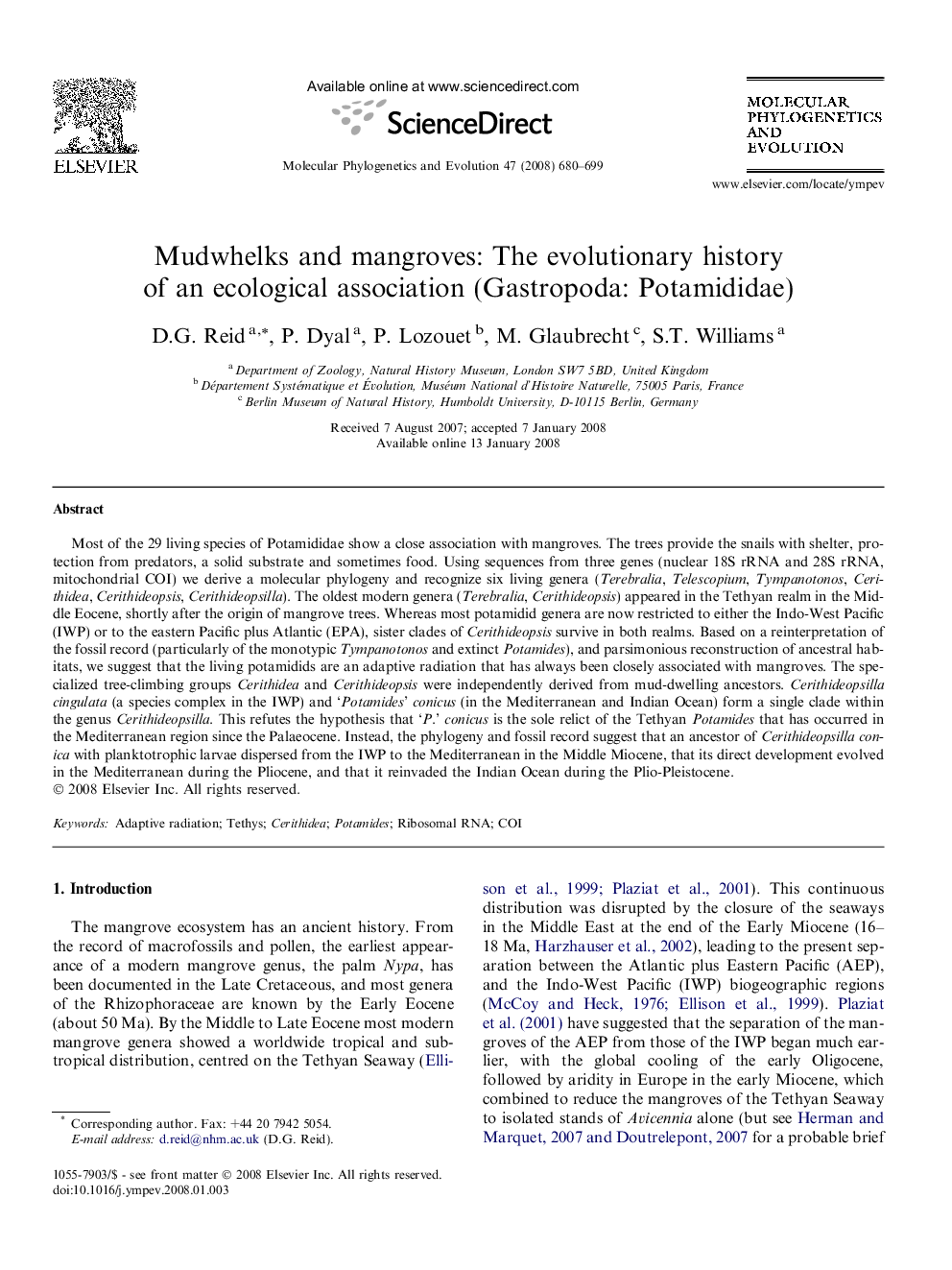| کد مقاله | کد نشریه | سال انتشار | مقاله انگلیسی | نسخه تمام متن |
|---|---|---|---|---|
| 2835370 | 1164340 | 2008 | 20 صفحه PDF | دانلود رایگان |

Most of the 29 living species of Potamididae show a close association with mangroves. The trees provide the snails with shelter, protection from predators, a solid substrate and sometimes food. Using sequences from three genes (nuclear 18S rRNA and 28S rRNA, mitochondrial COI) we derive a molecular phylogeny and recognize six living genera (Terebralia, Telescopium, Tympanotonos, Cerithidea, Cerithideopsis, Cerithideopsilla). The oldest modern genera (Terebralia, Cerithideopsis) appeared in the Tethyan realm in the Middle Eocene, shortly after the origin of mangrove trees. Whereas most potamidid genera are now restricted to either the Indo-West Pacific (IWP) or to the eastern Pacific plus Atlantic (EPA), sister clades of Cerithideopsis survive in both realms. Based on a reinterpretation of the fossil record (particularly of the monotypic Tympanotonos and extinct Potamides), and parsimonious reconstruction of ancestral habitats, we suggest that the living potamidids are an adaptive radiation that has always been closely associated with mangroves. The specialized tree-climbing groups Cerithidea and Cerithideopsis were independently derived from mud-dwelling ancestors. Cerithideopsilla cingulata (a species complex in the IWP) and ‘Potamides’ conicus (in the Mediterranean and Indian Ocean) form a single clade within the genus Cerithideopsilla. This refutes the hypothesis that ‘P.’ conicus is the sole relict of the Tethyan Potamides that has occurred in the Mediterranean region since the Palaeocene. Instead, the phylogeny and fossil record suggest that an ancestor of Cerithideopsilla conica with planktotrophic larvae dispersed from the IWP to the Mediterranean in the Middle Miocene, that its direct development evolved in the Mediterranean during the Pliocene, and that it reinvaded the Indian Ocean during the Plio-Pleistocene.
Journal: Molecular Phylogenetics and Evolution - Volume 47, Issue 2, May 2008, Pages 680–699